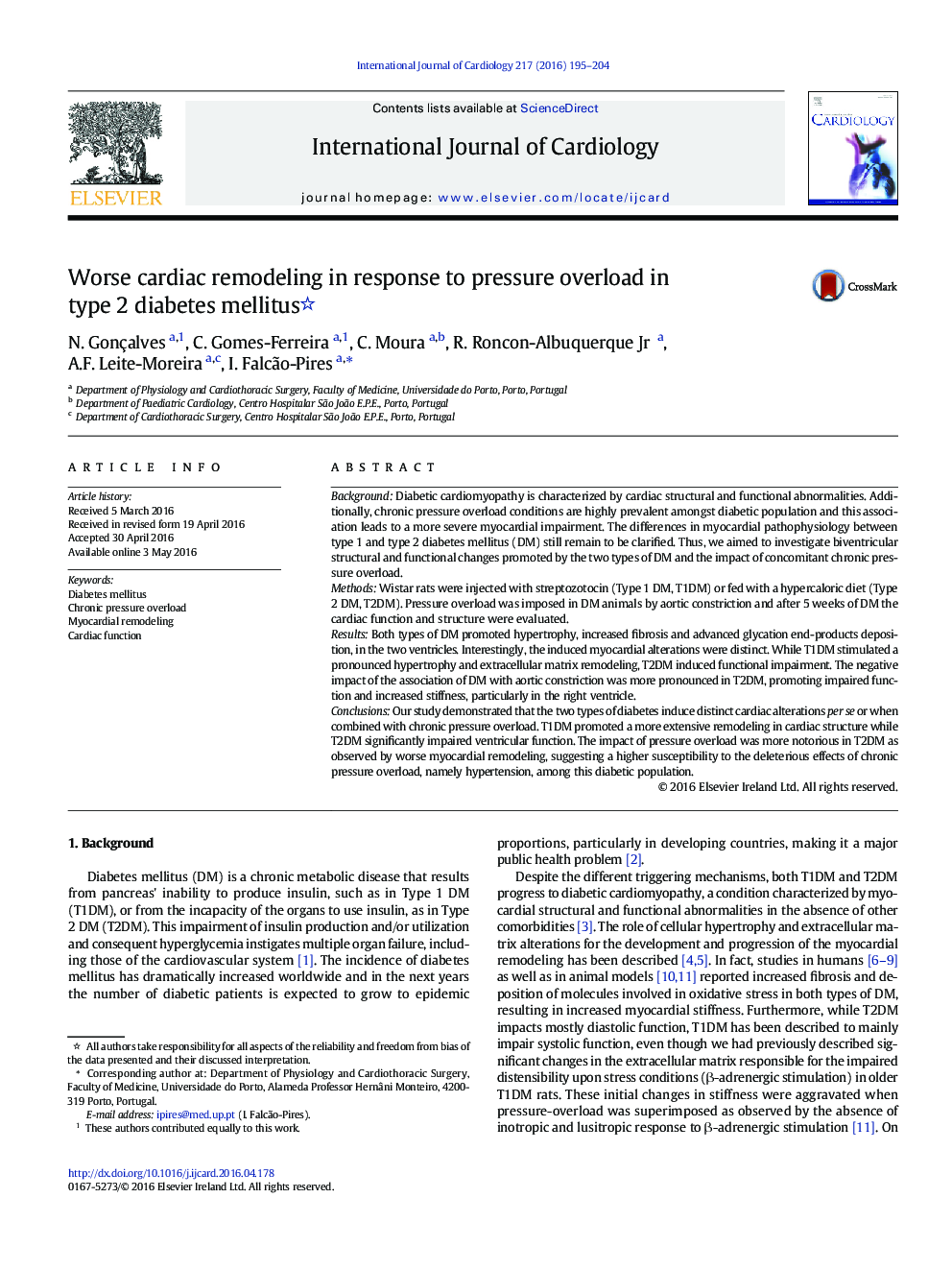| Article ID | Journal | Published Year | Pages | File Type |
|---|---|---|---|---|
| 5964268 | International Journal of Cardiology | 2016 | 10 Pages |
â¢Different pathophysiologic mechanisms between type 1 and type 2 diabetes are proposed.â¢Type 1 diabetes induced higher biventricular hypertrophy and fibrosis.â¢Type 2 diabetes promoted dysfunction, namely impaired right ventricular relaxation.â¢Pressure overload deteriorated cardiac function but only in type 2 diabetes.
BackgroundDiabetic cardiomyopathy is characterized by cardiac structural and functional abnormalities. Additionally, chronic pressure overload conditions are highly prevalent amongst diabetic population and this association leads to a more severe myocardial impairment. The differences in myocardial pathophysiology between type 1 and type 2 diabetes mellitus (DM) still remain to be clarified. Thus, we aimed to investigate biventricular structural and functional changes promoted by the two types of DM and the impact of concomitant chronic pressure overload.MethodsWistar rats were injected with streptozotocin (Type 1 DM, T1DM) or fed with a hypercaloric diet (Type 2 DM, T2DM). Pressure overload was imposed in DM animals by aortic constriction and after 5Â weeks of DM the cardiac function and structure were evaluated.ResultsBoth types of DM promoted hypertrophy, increased fibrosis and advanced glycation end-products deposition, in the two ventricles. Interestingly, the induced myocardial alterations were distinct. While T1DM stimulated a pronounced hypertrophy and extracellular matrix remodeling, T2DM induced functional impairment. The negative impact of the association of DM with aortic constriction was more pronounced in T2DM, promoting impaired function and increased stiffness, particularly in the right ventricle.ConclusionsOur study demonstrated that the two types of diabetes induce distinct cardiac alterations per se or when combined with chronic pressure overload. T1DM promoted a more extensive remodeling in cardiac structure while T2DM significantly impaired ventricular function. The impact of pressure overload was more notorious in T2DM as observed by worse myocardial remodeling, suggesting a higher susceptibility to the deleterious effects of chronic pressure overload, namely hypertension, among this diabetic population.
